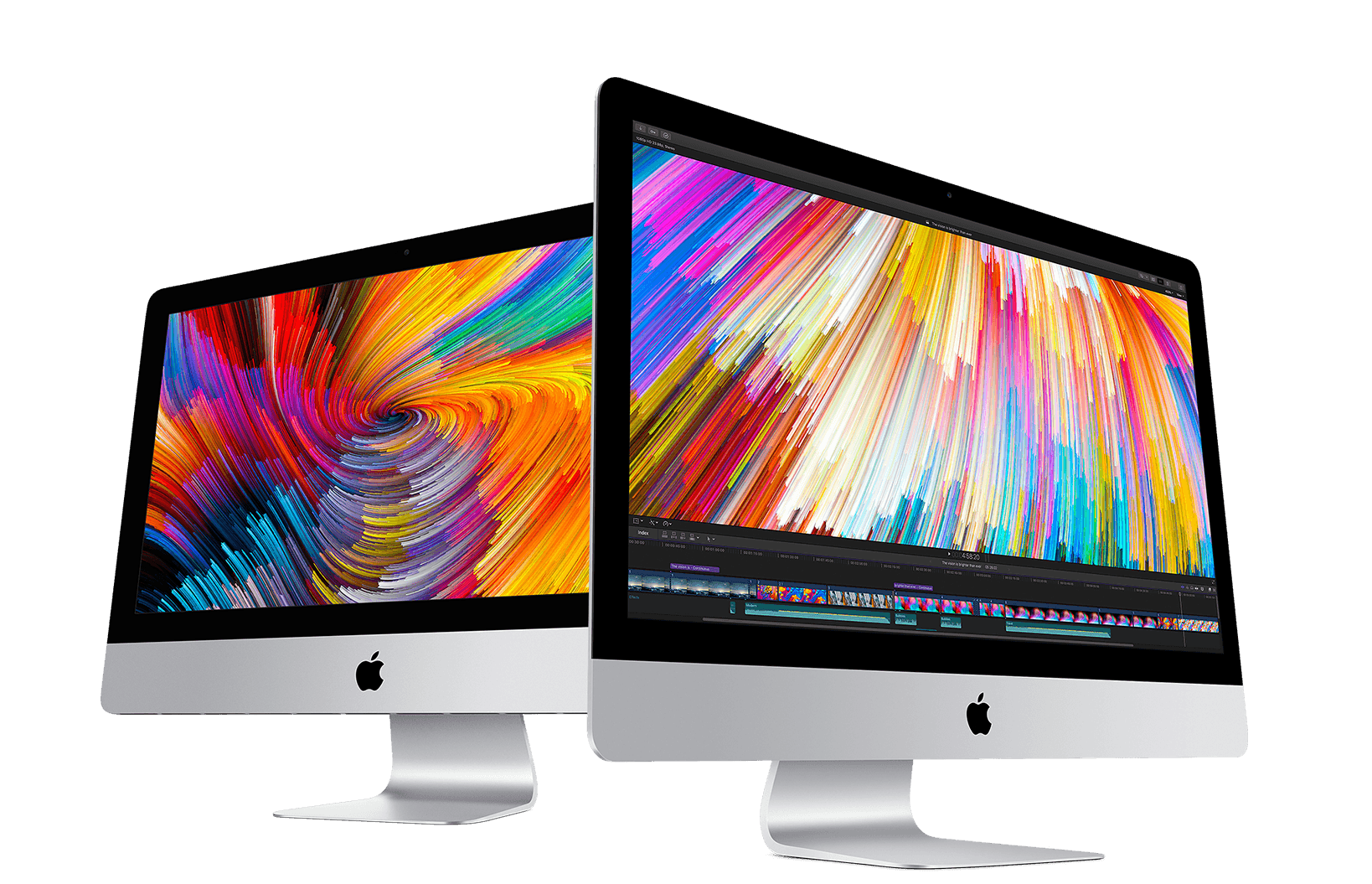Audio quality
Panasonic’s flatscreen TVs used to lead the way when it came to sound quality and certainly last
year’s models were stand-out performers in this area. This year’s models have been a
mixed bunch though. Its plasma TVs still have excellent sound, but its LED models haven’t been in the same
class at all, and unfortunately it’s a similar story with the WT50. While it sounds much better than the ET5
models, it doesn’t have the same sonic punch as the GT50 plasmas.
The main problem is that it is lacking in the bass department, so it’s sound is overly heavy in mid-
range frequencies. This means that dialogue and speech on TV shows sound fine, but action movies
and music channels tend to come across as a bit gutless.
Design and connections
Panasonic’s design department has struggled previously to come up with designs that achieve anything other than ‘dull’ on the stylish scale, but this year it has upped its game considerably. The TX-
L42WT50 is undoubtedly the most attractively tailored TV the company has ever delivered.
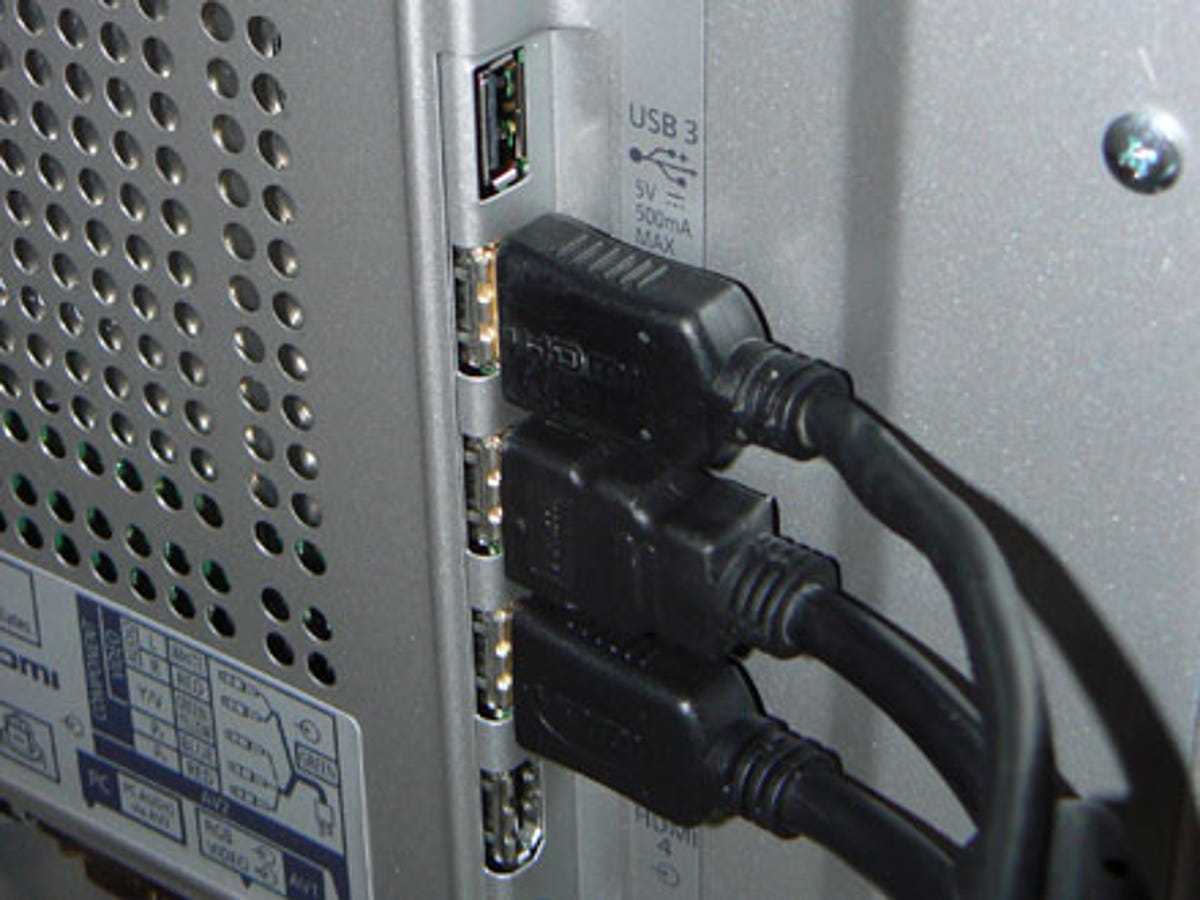
The four HDMI ports are found on the left hand edge of the TV.
The crescent stand that the TV sits on is a real thing of beauty, but the rest of the styling is also top class. For example, I like the slim design and the fact that the bezel around the screen is
relatively slender at just 8mm wide. The chrome trim running around the outside of the screen looks
ace and the Perspex lip at the bottom is also a nice touch, even if it is very reminiscent of Samsung’s
older designs.
In the box you’ll find two remote controls. The standard zapper is a similar shape to those that ship
with Panasonic’s other TVs. It’s quite large and long, but the button layout is good and the curved
back makes it comfortable to hold and use.
The second remote is a touchpad zapper that connects to the TV via Bluetooth. It’s actually pretty
awkward to use and makes many actions more difficult to perform, so I can’t help thinking
Panasonic needs to go back to the drawing board with this one. LG’s motion-sensing remote, for
example, works much better than this one.
I’ve got no complaints when it comes to connectivity though, as the TV has all the bases covered in
this department. The side panel on the left is home to all four HDMI ports as well as three USB ports
and an SD card slot. On the rear you’ll find the rest of the sockets including a VGA port, optical audio
output, RF input for the Freeview HD tuner and satellite input for the Freesat tuners. The TV also has
Ethernet onboard, as well as integrated Wi-Fi and Bluetooth. The latter is used for syncing the 3D
glasses to the TV and for connecting other devices, such as the touchpad remote, wireless keyboards
and headsets.
User interface and EPG
The menus on this year’s TVs from LG and Samsung look very flash, with modern graphics and a
cool homescreen from which you can access most of the key features. As with other
Panasonic sets, the TX-L42W50 lacks any of these embellishments. Instead its system looks largely unchanged
from what you saw on TVs five years ago.
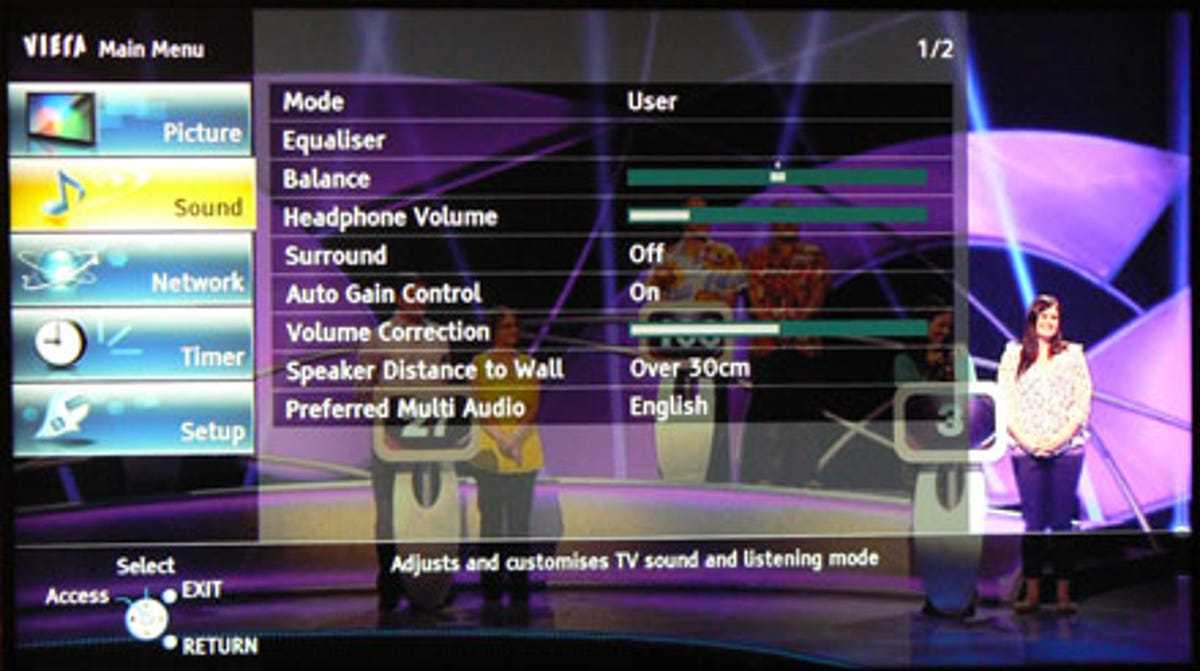
The menus are disappointingly dated looking, especially compared to those on LG and Samsung’s
sets.
The menus are very dull and static, lacking the zippy animations and transitions found on sets from Korean
manufacturers. On the plus side, they are easy to find your way around and you do get lots of
control over the picture settings, including a full colour management system. This is turned off by
default but is easy to enable from the main settings menu. The only slight catch is that a single slider
controls both the backlight intensity and contrast, whereas on most TVs from rival gogglebox makers these
are kept separate.
Panasonic has updated its EPG slightly, finally removing the advert place holders that took up
space on the screen on last year’s models. It remains very basic looking however, and
it’s annoying that it lacks a video thumbnail window, so you can’t keep track of a program while
browsing through the guide.
3D picture quality
The speed of a panel is important when it comes to 3D as it helps to get rid of crosstalk — the image
ghosting you sometimes get with 3D images. The WT50 is sold as a 1,600Hz set, which on paper is very
fast. The panel isn’t really 1,600Hz though — instead the set uses a 200Hz panel, with added backlight
blinking, which ups the figure to the magical 1,600Hz level.
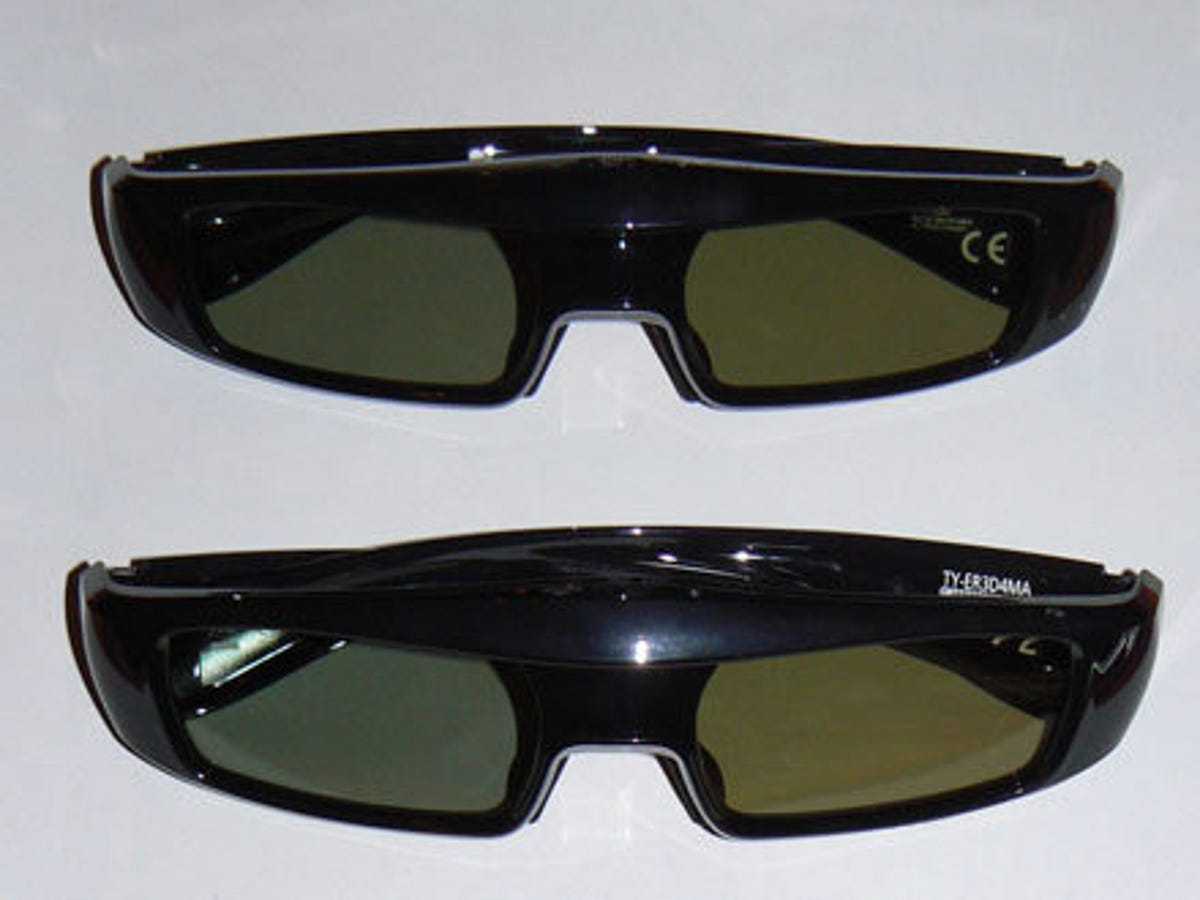
Panasonic includes two pairs of glasses with the TV.
Nevertheless, it certainly seems to do the business here as the WT50 is almost completely free of
crosstalk. This helps to makes its 3D pictures look very solid and ‘real’. Add in the set’s inherent high
brightness levels and you’ve got 3D pictures that have real punch and impact.
It’s also good to see that Panasonic supplies two pairs of active glasses with the TV. These glasses
have a new design and are much smaller, lighter and more comfortable to wear than last year’s specs.
2D picture quality
Straight out of the box the WT50’s pictures look very impressive. Unlike Samsung’s TVs, the presets
on Panasonic’s models have always been excellent and the ones on the WT50 are no different. The
Cinema preset in particular is very accurate and produces rich cinematic colours, making movies on Blu-ray look stunning. The set’s viewing angles are very wide too, so you don’t get the colour and
contrast shifts that you see on Sony’s TVs when you view them from a side angle.

The TV’s picture presets are very strong, especially compared to those on Samsung’s TVs.
This model also does an excellent job of teasing out every last bit of detail in HD feeds, and its
upscaler also puts in an impressive performance when dealing with standard definition channels or
DVD movies.
With the TV’s Intelligent Frame Creation (IFC) motion processing turned off you will see some blur
on fast camera pans and sports broadcasts, but this is something that effects all LED screens to some
degree. Enabling IFC at its highest setting leads to an overly smooth and processed look, but if you opt
for the lower setting it does a decent job of smoothing motion and judder without making things look
glassy.
Panasonic has used edge-dimming technology on this TV to help it achieve deeper black levels.
The dimming feature only works in the cinema and normal picture modes. With dimming off, its
black levels are actually pretty average. Turning it on improves things pretty dramatically,
however it does sometimes show itself up by making an area of the picture appear brighter than it
really should be. It doesn’t happen that often, and it improves black levels so significantly
that it’s definitely worth leaving it turned on. Like a lot of edge-lit TVs it does suffer a little bit from
inconsistent backlighting, and certainly I could see some clouding in the corners of the display, but it’s
not as bad in this regard as many other LED TVs I’ve had in for review.
Digital Media
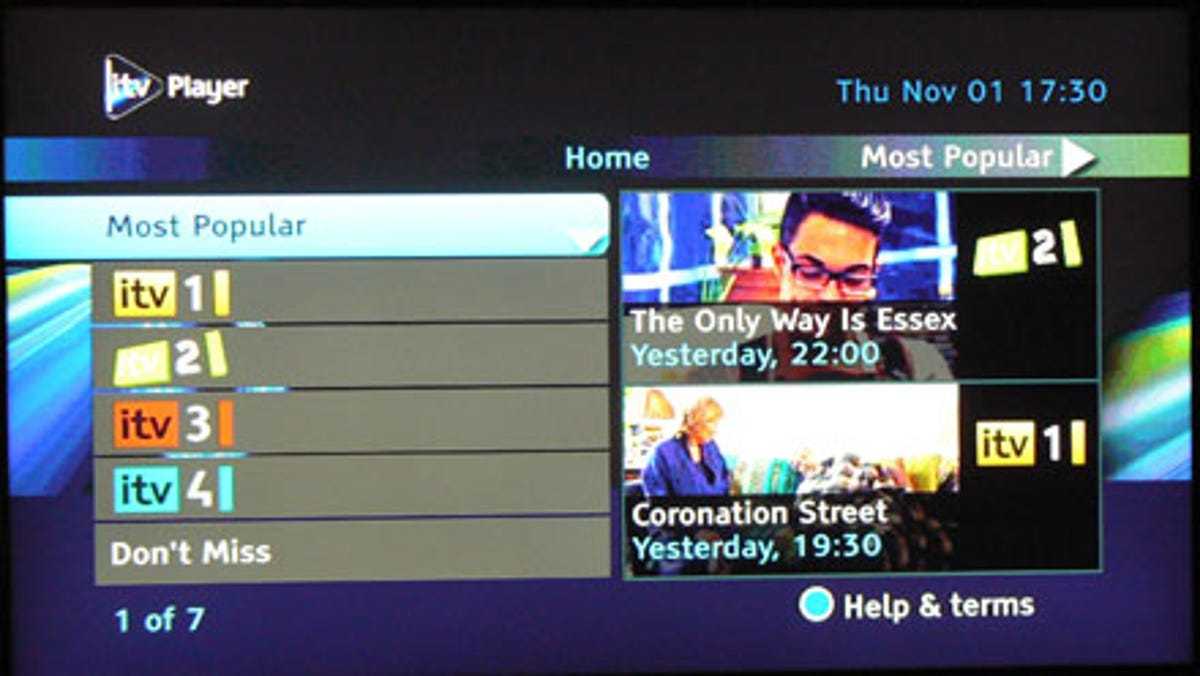
ITV Player is only available if you’re using the Freesat tuner.
The layer design of the Viera Cast interface is a tad annoying as you have to step up and down through
grids of icons to access different services, which is slow and cumbersome. Rather bizarrely, ITV Player is available via the on-demand section of the Freesat programming guide, but it’s not present in
Viera Cast and you can’t access it if you only use the Freeview HD tuner.
Viera Cast also includes a full Web browser, and Panasonic has dramatically improved this feature when I compare it to
the one I previously used on the company’s other sets. Videos on the BBC website now play back
properly and you can also make video fullscreen, something which didn’t seem to be possible before.
As the TV has a dual-core processor, it supports multi-tasking for smart apps. If you’ve opened more
than one app you can switch between them by pressing the Tools button on the remote. This causes
the corner of the screen to curl up showing you a list of opened apps, which you can then jump into.
Switching between the last two opened apps is almost instantaneous, but if you flick to a third it’s
much slower, as it has to essentially resume the app from standby.
This TV has good digital media support, allowing you to play back files from USB drives and SD memory
cards, or to stream them across a network from PCs and NAS drives. File format support is pretty
broad too. It played a range of HD-MKV, DivX and Xvid video files without any problems.
The TV also has basic PVR features, so if you plug a USB drive into one of its ports you can record and
pause live TV. As with all of the current batch of TVs with this feature, however, it can only record the
channel you’re tuned to — so you can’t watch one show while recording another in the way you can on
most PVRs.
Panasonic now has an app now for iOS and Android devices that lets you ‘throw’ pictures, videos and
web pages from your mobile or tablet to the TV. You do this by opening the app and then selecting
the item you want to view on your TV and by simply dragging it to the top of the screen. It does take
a while for the transfer to happen, so it’s not as seamless as Panasonic would have you believe in its
marketing materials, but it does work well and can be quite useful at times.
